Physical Address
304 North Cardinal St.
Dorchester Center, MA 02124
Morton neuroma is one of the most common pain syndromes that affects the forefoot. It is characterized by tenderness and burning pain in the plantar surface of the forefoot, with associated painful paresthesias into the affected 2 toes. This pain syndrome is thought to be caused by perineural fibrosis of the interdigital nerves. There is often coexistent intermetatarsal bursitis because the pathogenesis of both pathologic conditions is similar. Although the nerves between the third and fourth toes most often are affected, the second and third toes and rarely the fourth and fifth toes also can be affected ( Figs. 197.1 and 197.2 ). The patient often feels that he or she is walking with a stone in his or her shoe. The pain of Morton neuroma worsens with prolonged standing or walking for long distances and is exacerbated by improperly fitting or padded shoes. As with bunion, bunionette, and hammer toe deformities, Morton neuroma most often is associated with wearing tight, narrow-toed shoes.
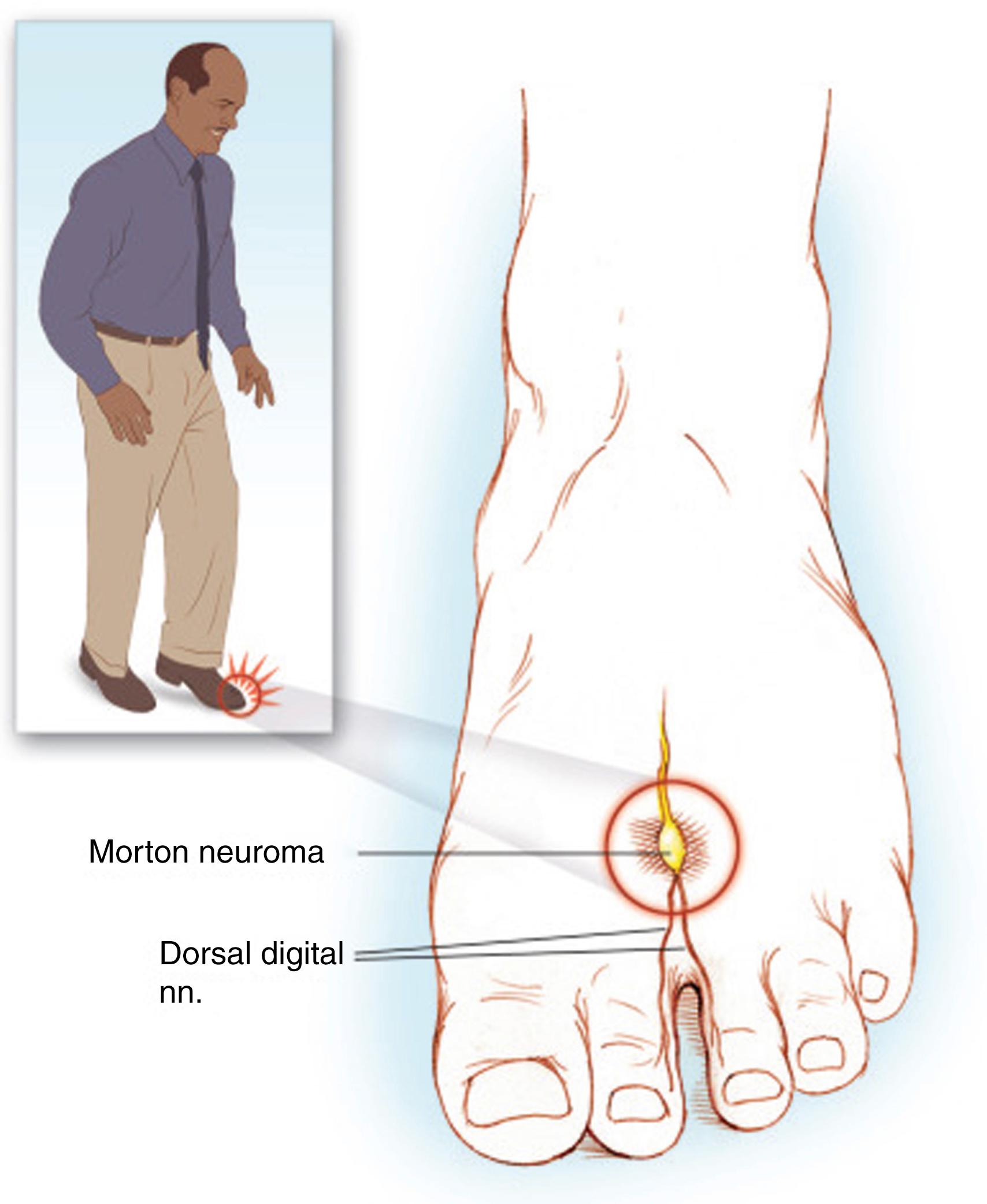
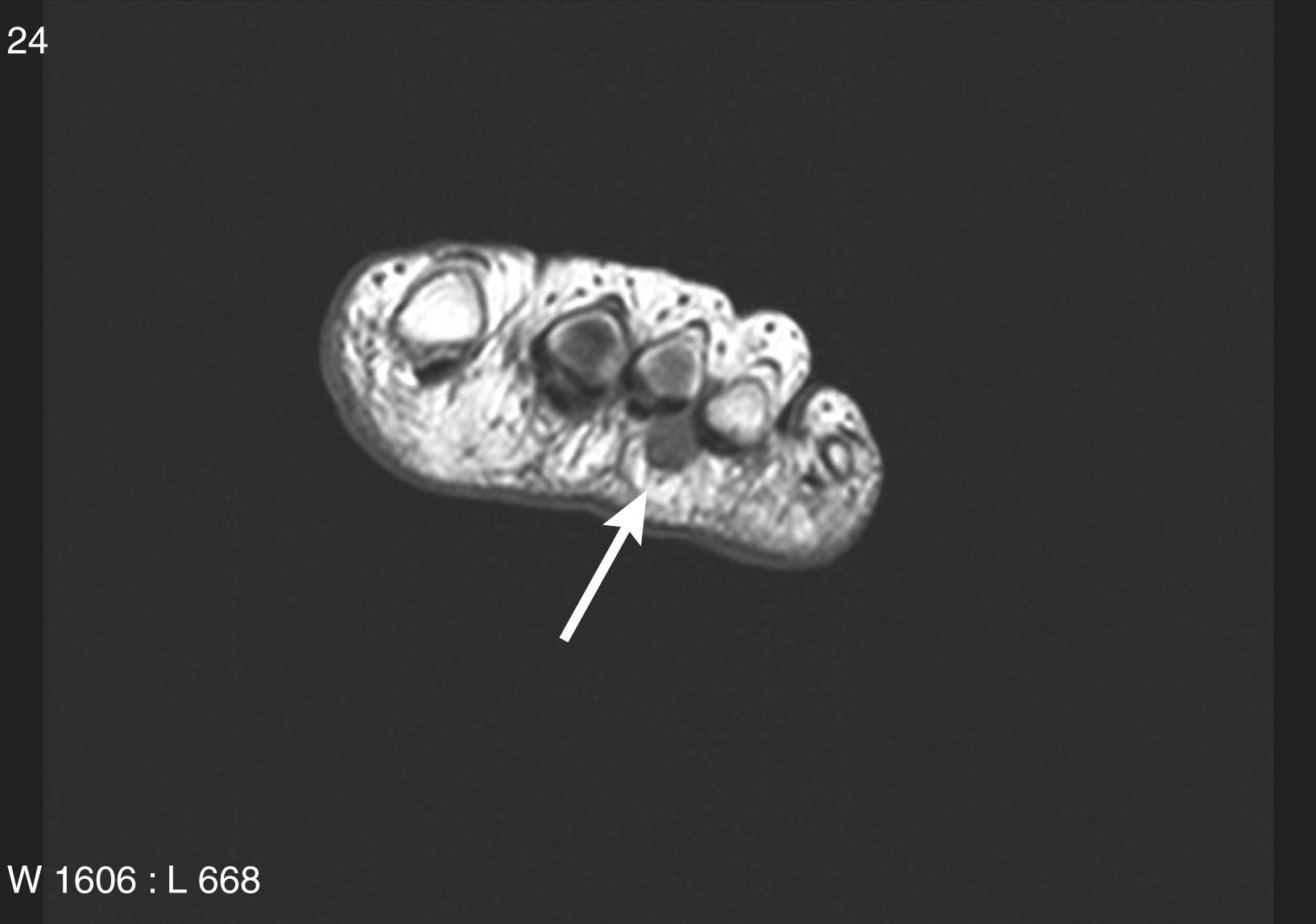
On physical examination, pain can be reproduced by firmly squeezing the 2 metatarsal heads together with 1 hand while placing firm pressure on the interdigital space with the other hand ( Fig. 197.3 ). This maneuver is known as the Mulder sign . In contradistinction to metatarsalgia, in which the tender area remains over the metatarsal heads, with Morton neuroma the tender area is localized to only the plantar surface of the affected interspace, with paresthesias radiating into the 2 affected toes. The patient with Morton neuroma often exhibits an antalgic gait in an effort to reduce weight bearing during walking.
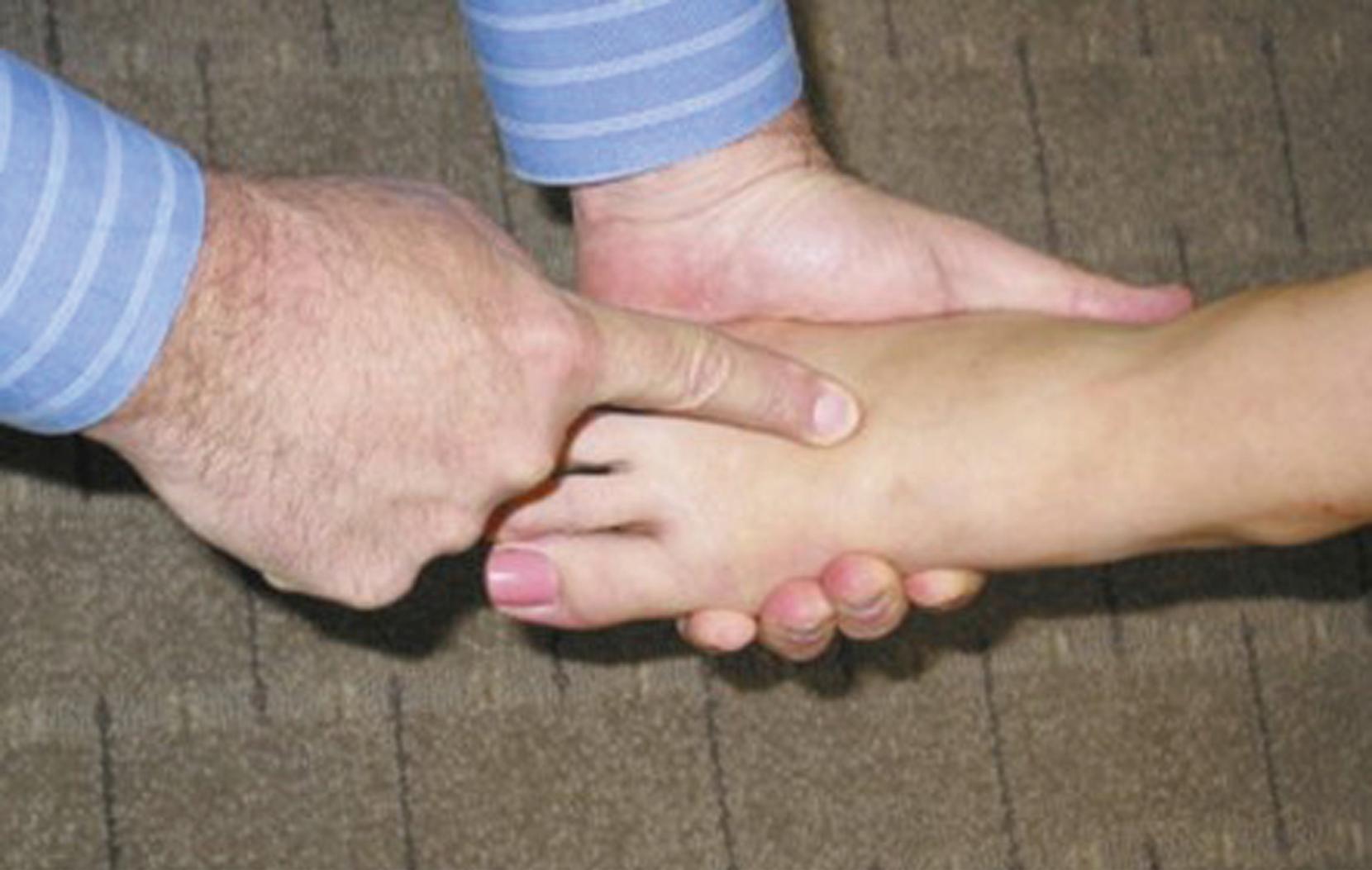
Plain radiographs are indicated for all patients with Morton neuroma to rule out fractures and identify sesamoid bones that may have become inflamed. On the basis of the patient’s clinical presentation, additional testing may be indicated, including complete blood cell count, sedimentation rate, and antinuclear antibody testing. Magnetic resonance imaging and ultrasound imaging of the metatarsal bones are indicated if Morton neuroma, joint instability, occult mass, or tumor is suggested (see Fig. 197.2 ; Fig. 197.4 ). Radionuclide bone scanning may be useful in identifying stress fractures of the metatarsal bones or sesamoid bones that may be missed on plain radiographs of the foot.
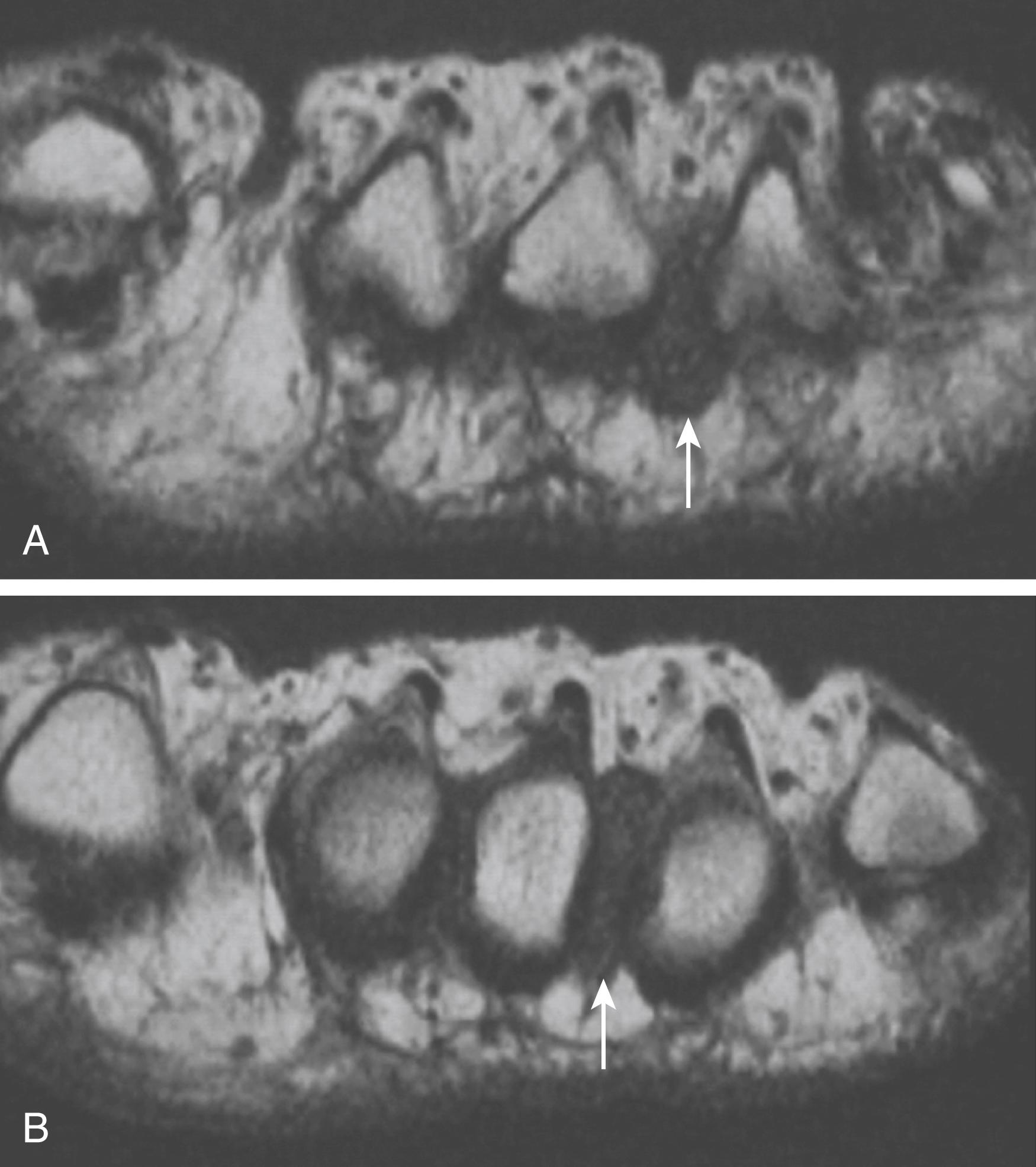
In a manner analogous to the digital nerves of the hand, the digital nerves of the foot travel through the intrametatarsal space to provide innervation to each toe ( Fig. 197.5 ). The plantar digital nerves derived from the posterior tibial nerve provide sensory innervation to the major portion of the plantar surface. The dorsal aspect of the foot is innervated by terminal branches of the deep and superficial peroneal nerves. There may be considerable overlap in the sensory innervation of these nerves.
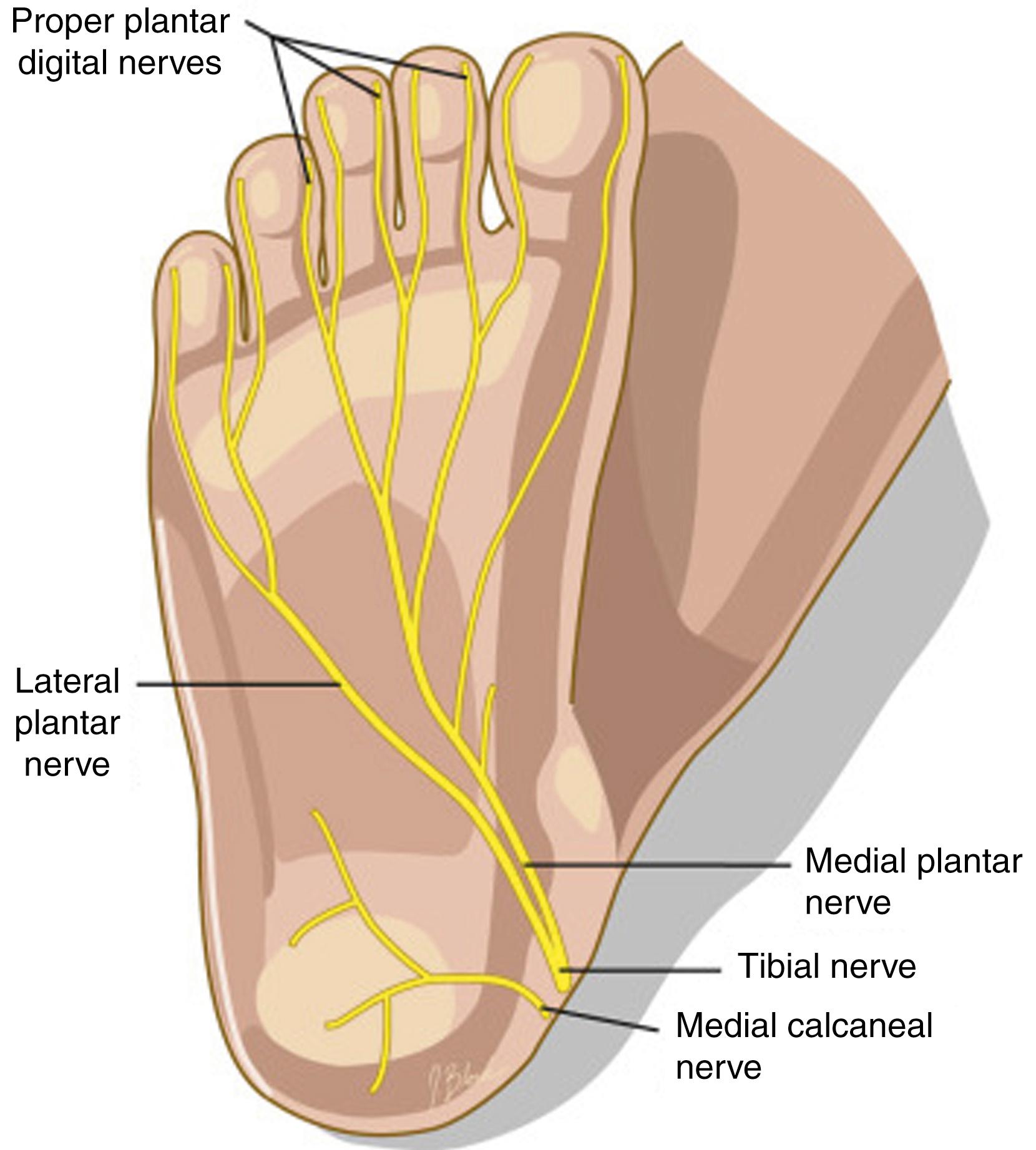
Become a Clinical Tree membership for Full access and enjoy Unlimited articles
If you are a member. Log in here